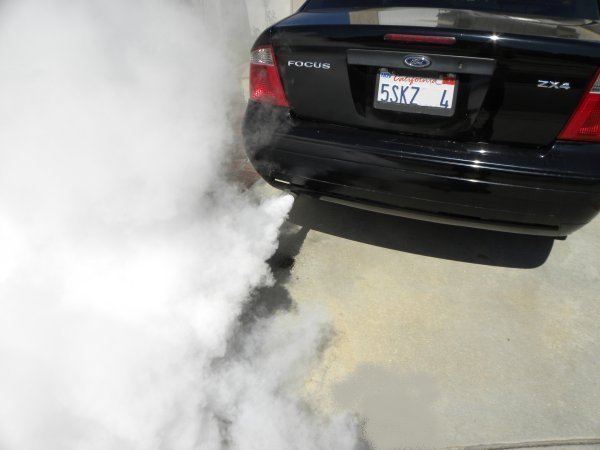The next thing would be to look at the switching rate of the front oxygen sensor during a test-drive. It should switch between "rich" and "lean" about two times per second. If it is doing that, the engine is burning the correct air/fuel mixture, then you only have drag to worry about, meaning a sticking brake, a binding universal joint on the drive shaft, (when used), low tire pressure, dragging a trailer, wind resistance of a roof-top luggage carrier, and things like that.
If the oxygen sensor is showing a constantly-rich mixture, the engine computer is requesting too much fuel, usually due to an incorrect sensor reading. If your engine does not use a mass air flow sensor, the main fuel metering calculation will be from the MAP sensor readings. That just measures intake manifold vacuum to determine load on the engine. There is a specific range of signal voltage that acceptable, but if that voltage is wrong, but still within that range, the computer will use that wrong reading to calculate fuel needs. A defective sensor can cause that, but it is more common to find a vacuum leak. The extra air sneaking in does not contribute to power, but the resulting lower vacuum seen by the MAP sensor tells it you are accelerating or the engine is under load, and therefore it needs more fuel. Even though the computer requests more fuel, intake manifold vacuum remains low, and the computer keeps on adding more and more fuel.
There are two other things you can look at with a scanner, but you need a mechanic who is familiar with your vehicle to interpret the results. The first is to look at length of the "pulse width" the computer is holding the injectors open for. Suppose you know that 35 milliseconds is normal, but you see that on your engine, it is at 45 milliseconds. That tells you fuel has more time to spray into the engine each time the injector fires. Now you can pinch off various vacuum hoses and do other things while watching to see if the number of milliseconds drops.
The next thing to look at is the "fuel trim" numbers. These are shown in different ways depending on the car and the scanner. The most basic way is to show a single reading for "short-term fuel trim", (STFT), and one number for "long-term fuel trim", (LTFT). All engine computers come from the factory programmed to command a specific amount of fuel each time the injector fires. As soon as you start driving, the computer looks at the readings from the oxygen sensor in the exhaust, along with the readings from other sensors, to determine if it needs to add or subtract a little fuel from the pre-programmed amount. Those small fine-tuning adjustments are what is happening right now, and are called the "short-term fuel trims". If everything is working properly, those numbers will be bouncing around close to "0.0". If you see a high positive number, that means the computer is requesting more fuel, but it is up to you to figure out why. That would typically occur during periods of acceleration. If you see the STFT is high negative, it means the computer sees too much fuel going into the engine, and it is trying to cut back, possibly without success. One potential cause of that is fuel pressure that is too high. Fuel pressure on most cars is not monitored. It is preset, and calculations are made while assuming that variable is correct. For engines with the fuel pressure regulator on the engine, a kinked or restricted fuel return line to the tank can cause fuel pressure to be too high. That excessive fuel pressure makes too much fuel spray into the engine. The computer can try to offset that by opening the injectors for a shorter period of time, but there is a limit to how much control it has.
When the computer sees that it is constantly making the same fuel metering corrections over a longer period of time, it moves that correction to the "long-term fuel trims". That means instead of seeing the need to deviate from the pre-programmed values all the time, it changes the pre-programmed values. With the new starting point, less short-term correction is needed each time you drive the car. By looking at how much change the computer has been asking for, you can verify the engine is using more or less fuel than expected. Remember though this has to do with how well the engine is running, and whether the sensors are reporting correct values. Hard acceleration, dragging brakes, pulling a trailer, etc. All require more fuel and air at the same time. The fuel trim numbers only pertain to the percentage of fuel in that mixture, and ideally you will find all the fuel trim numbers to be close to "0.0".
Do not overlook a restricted air filter. You will have to push the accelerator pedal further to get up to speed, and opening the throttle blade reduces intake manifold vacuum. The MAP sensor sees the lower vacuum and tells the computer the engine is under load and needs more fuel.
One more clue to look for is black smoke from tail pipe. That is a sign of burning a fuel/air mixture that is too rich. That is not caused by dragging brakes, trailers, wind, and things like that. This is where fuel pressure and incorrect sensor readings become suspect.
Saturday, February 3rd, 2018 AT 2:54 PM


